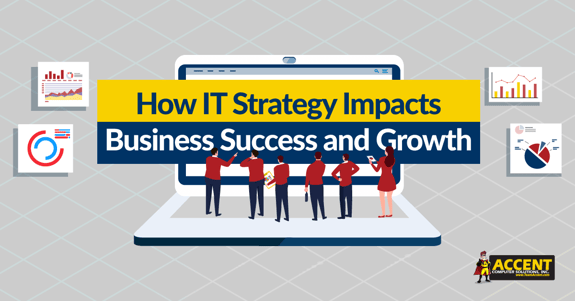Many business executives see IT as a necessary evil. You definitely need it to get your job done – emailing, processing orders, billing, etc. – but it’s just something that keeps the business humming along.
These executives are missing out because the most successful companies today are the ones that see a clear relationship between a well-executed IT strategy and its power to help move the business forward.
What if there was a way to go from “humming along” to using technology as a competitive advantage – an advantage that could move the needle toward growth, increased profitability, and improved customer satisfaction?
The first step to getting more out of your technology is to manage the IT department, whether it’s internal or outsourced, like other functions are managed.
There seems to be a misconception among business leaders that IT just does its thing, and traditional management processes (the same ones used for Sales or Operations) don’t really apply. In fact, many executives aren’t even confident about what their IT department does with its time.
Isolating IT this way makes it very difficult for the IT department to deliver results beyond “humming along.”
The IT department should have a defined strategy with objectives that support the organization’s overall business plan. Those objectives should have key performance indicators (KPIs) and other measures of productivity associated with them so they can be held accountable for their progress.
As Peter Drucker is often quoted, “What gets measured gets managed.” Managing IT in this way keeps it aligned with the overall business strategy, keeping employees engaged. Planned technology will support that strategy and drive growth.
Once Chief Information Officers (CIOs) move past the “just make it work” stage, they can begin reviewing business processes to see how technology could be utilized more effectively.
Here are some examples of possible results:
- What if the sales team could sell from anywhere with real-time access to customer and prospect data in their customer relationship management (CRM)? Would providing them with the ability to easily update customer information, enter current status notes, and submit orders from the road enable them to get deals done faster? Would you be able to forecast more accurately if sales and marketing had a clear view of how leads are progressing through the funnel?
- What would happen if your team could deliver better service to your customers by getting tasks done more effectively and efficiently? Could reviewing your internal processes and finding ways to improve them with technology make it easier for employees to do their job?
- What if you utilized advanced technologies in your product or service delivery process? Could you increase leverage and ship more widgets at a lower cost? Would it be helpful to have a better grasp on inventory and optimize lead times? Would pick, pack, and ship time be reduced so goods can get in your customers’ hands faster?
- What if management could get better visibility into what’s going on with the company? Could they make better decisions with more relevant information?
Talk to a trusted IT support consultant to see what kind of business results would be possible for your organization when technology is on the front burner instead of the back burner.


